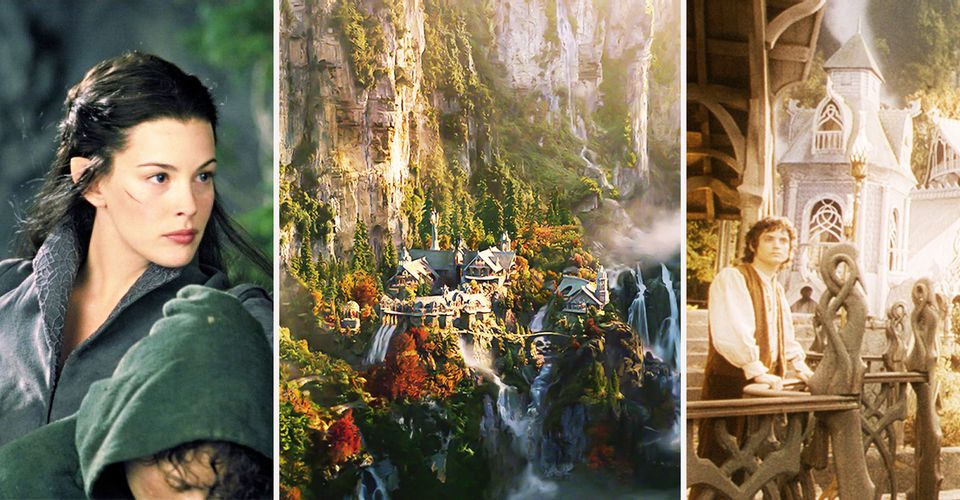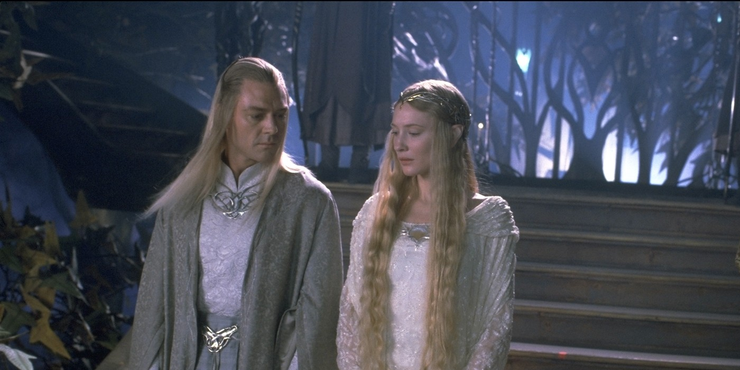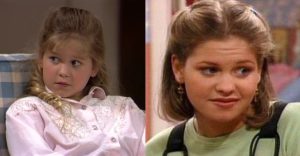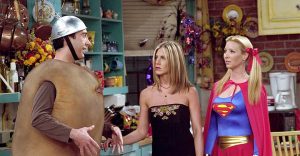Lord Of The Rings: 16 Things You Didn’t Know About Rivendell

For decades, author J.R.R. Tolkien’s iconic tale of The Lord of the Rings trilogy has been heavily lauded for being a timeless literary classic. Featuring themes of resilience and hope, the books have ignited the imagination of fans for many generations. In Middle-earth, few places conjure up as much intrigue as Rivendell. Ruled by Elrond, Lord of Rivendell, the books offered more details about the mystical refuge of the elves.
Similarly enough, director Peter Jackson’s film adaptations of the beloved books have also been widely considered a cinematic masterpiece. Featuring sweeping vistas of New Zealand’s natural beauty, Jackson’s films hold a special place in the hearts of many film lovers. We’ll shed light on the real-life filming location of Rivendell, and along with a certain place in Europe that inspired Tolkien to create Rivendell.
It was recently announced that a new Lord of the Rings television series is currently in development. Backed by Amazon and Warner Bros, it remains to be seen if Rivendell will be featured. The series is planned to take place before The Fellowship of the Ring.
J.R.R. Tolkien crafted a detailed history for the mythical world of Middle-earth. Unlike darker places within Middle-earth, such as Mordor, Rivendell is often depicted as a safe refuge.
In this article, we’ll be taking a closer look at 16 Things You Didn’t Know About Rivendell.
16 Sauron and his Witch-king failed to invade Rivendell

Die-hard Tolkien fans will undoubtedly remember the Witch-king of Angmar, but for more casual enthusiasts, we’ve decided to share a little more trivia about the character’s earlier connection to Rivendell. In The Lord of the Rings, the Witch-king of Angmar was known for being the leader of the Nazgûl, and also one of Sauron’s main captains who would take the lead in battle.
During the Angmar War, an arduous time between the Northern Dúnedain kingdom and the people of Angmar, the Witch-king actually led an attack on Rivendell itself. Beginning T.A. 1409, the Angmar War eventually ended by T.A. 1977. As stated in The Lord of the Rings, Appendix A, the Witch-king of Angmar attempted an attack on Rivendell, but ultimately failed to overtake it after reinforcements were sent from Lothlórien.
15 Rivendell was established in the Second Age by Elrond

On-screen, Rivendell might only appear briefly in director Peter Jackson’s Lord of the Rings film trilogy, but the area played a major role within the greater context of Middle-earth as a whole. Tolkien wrote extensively about Rivendell in other work, such as The Hobbit, The Silmarillion, and TheUnfinished Tales.
Undeniably beautiful and rich with history, Rivendell was founded in the year 1697 by Lord Elrond.
During the Second Age, an Elvish city called Eregion (or Hollin) was decimated by Sauron’s forces, who were in search of the Elvish rings of power. Elrond’s army fought alongside the Elves of Eregion, but they were eventually pushed back into the hills of Rhudaur. For over three years, they continued to fight and were eventually aided by Elves from Lindon and Men from Númenor.
After the struggle, Elrond and the other elves decided to stay and settle in Rivendell.
14 The meaning of Rivendell

In Sindarin, the name of Rivendell is actually Imladris, and “Rivendell” is a literal translation of the word’s meaning, which is “deep valley of the cleft”. In the “Common Tongue” spoken in Middle-earth, Imladris was also referred to as “Karningul”, and is referred to as such in The Lord of the Rings novels.
Rivendell is also referred to as “The Last Homely House East of the Sea” by others in the novels.
Tolkien was known for being a lover of languages, and for creating a detailed mythology surrounding Middle-earth. In The Lord of the Rings, Tolkien poured his knowledge of linguistics into creating Sindarin, one of the most popular forms of Elvish. Inspired by Old English and Old Norse, the language is typically the most commonly spoken by Elves in The Lord of the Rings.
13 Rivendell was hidden from other places in Middle-Earth

In The Lord of the Rings and The Hobbit, fans are given a quick glimpse at Rivendell. Unlike Minas Tirith – the capital of Gondor – Rivendell was somewhat hidden and isolated from other places in Middle-earth.
Originally founded by Elrond, Rivendell was located in the eastern region of Eriador.
On the map of Middle-earth, Rivendell can be found near the ford of Bruinen, but the exact location made it difficult to find, as it was situated within the Misty Mountains.
In The Lord of the Rings, the map of Middle-earth depicted the Great East Road leading straight towards Rivendell, but it was actually a hidden valley. In contrast to other places located more east of the Misty Mountains, Rivendell had a cool, comfortable climate, and the elf refuge was known for having agreeable weather.
12 The Easter egg for Oxford

According to The Letters of J. R. R. Tolkien, Rivendell was located on the same exact latitude as Oxford, which was Tolkien’s original hometown. In fact, the village of Hobbiton in the Shire was also situated on the same latitude as Oxford.
A life-long scholar, author J.R.R. Tolkien was born in 1892 and often credits his inspiration for writing The Hobbit and The Lord of the Rings from his time living in Oxford. In 1911, Tolkien moved to Oxford to study English Language and Literature and later returned as Professor for the same subject. In multiple interviews, Tolkien revealed that his first sentence for The Hobbit, “In a hole in the ground there lived a hobbit,” was first written down on exam papers.
11 Aragorn was sent to Rivendell by his mother

In the Lord of the Rings Appendix, much is explained surrounding the mysterious origins of Aragorn, heir of Isildur. When Aragorn was a child, his father Arathorn was struck down and killed in battle with orcs. Soon after, Aragorn was sent to Rivendell, where he was taken care of by Elrond.
Aragorn’s mother was afraid that Aragorn would be killed like his father, so she begged that Aragorn’s true ancestry be hidden from him. In turn, Aragorn was then known as Estel, and did not discover his identity until much later. Aragorn was a descendant of Elros Tar-Minyatur, the Half-Elven son of Eärendil and Elwing, and he was also known for being the last relative of Anárion.
One of Aragorn’s ancestors, Arvedui, was known as the last King of Arthedain. Arvedui married Fíriel, who was a descendant of Anárion—the youngest son of Elendil, the High King of Gondor and Arnor.
10 Rivendell’s real-life filming location

Located 50 minutes from downtown Wellington, Kaitoke Regional Park is an idyllic nature preserve in Upper Hutt, New Zealand. With lush rainforest at every turn, the park features walking paths and places to picnic for the public.
In The Lord of the Rings, Kaitoke Regional Park was the exact filming location for Rivendell in The Fellowship of the Ring. Waterfalls found in some of the scenes were later added with digital effects. Some areas of the park are also shown on screen with the Fords of Isen.
With crystal clear waters and a mesmerizing green canopy, Kaitoke Regional Park evokes a sense of tranquility, just like Rivendell. Experienced kayakers can even explore the Hutt River Gorge area, an area of equally undisturbed natural beauty. If you’ve ever watched The Fellowship of the Ring and wistfully dreamed of visiting Rivendell, surprise: it looks like fans can actually explore the real-life location.
9 Boromir dreamed of Rivendell in a cut scene from Fellowship of the Ring

Interestingly enough, both Boromir and his younger brother, Faramir, had similar dreams before Sauron’s forces attacked Osgiliath. The dream eventually led Boromir to seek counsel from his father. Later, Boromir traveled 110 days before reaching Rivendell, experiencing many different obstacles on his journey.
In The Fellowship of the Ring novel, Boromir tells the Council of Elrond, “In that dream, I thought the eastern sky grew dark and there was a growing thunder, but in the West a pale light lingered, and out of it I heard a voice, remote but clear, crying: Seek for the Sword that was broken: In Imladris it dwells; There shall be counsels taken Stronger than Morgul-spells. There shall be shown a token That Doom is near at hand, For Isildur’s Bane shall waken, And the Halfling forth shall stand.”
8 Flight of the Conchords band member played two different Rivendell elves

New Zealand artists, actors, and musicians all played a major role in the production of The Lord of the Rings. Some of the actors included Sala Baker (Sauron), Craig Parker (Haldir), and Karl Urban (Éomer), but the cast also featured a certain musician also hailing from New Zealand.
One part of the comedic duo and folk-rock band, Flight of the Conchords, musician Bret McKenzie also took some time to appear in The Lord of the Rings and The Hobbit film adaptations. In fact, McKenzie played two different elves in each of the film trilogies. In The Fellowship of the Ring, McKenzie appears as “Figwit” — a fan-made acronym for “Frodo Is Great… Who Is That?”
Also, while starring as Lindir in The Hobbit, McKenzie was shown in a behind-the-scenes featurette as being challenged with the task to memorize three complex lines of Elvish in one day.
7 Glorfindel originally had Arwen’s role in taking Frodo to Rivendell

When director Peter Jackson delivered his film adaptations of The Lord of the Rings series, there were a few aspects about the movies that stirred up some controversy with fans. In The Fellowship of the Ring, after Frodo becomes wounded at Weathertop, an Elf named Glorfindel helps take Frodo to Rivendell. In the novel, Chapter XII: “Flight to the Ford”, Glorfindel leads the Nazgûl away from the Ford of Bruinen near Rivendell. When the Nazgûl threatened with their presence again, Glorfindel placed Frodo on his horse, Asfaloth, and commanded him to take Frodo to safety in Rivendell.
However, in The Fellowship of the Ring film, actress Liv Taylor plays Arwen, who replaces Glorfindel’s role. In the film, she rides a white horse named Asfaloth and takes Frodo to Rivendell herself.
6 The set was inspired by Frank Lloyd Wright and Japanese temples

According to The Art of the Fellowship of the Ring, author Gary Russell notes that the conceptual design surrounding the LOTR film trilogy dated back to 1997. Two acclaimed Lord of the Rings artists, Alan Lee and John Howe, were then brought on to the project by director Peter Jackson.
Eager to find a sense of “gritty realism” for the films, artist John Howe’s work depicting Bag End, the Black Gate, and the Balrog, all served as inspiration for the final cut. In particular, Alan Lee helped design the architecture for Helm’s Deep, Moria, and Minas Tirith. Lee also worked on a personal painting which served as imagery for Rivendell.
In the book, The Art of the Fellowship of the Ring, real-life inspiration for Rivendell is “a cross between a Japanese Temple and Frank Lloyd Wright.”
5 The Hobbit Extended Editions featured more scenes in Rivendell

The Hobbit: An Unexpected Journey clocks in at a total running time of 3 hours and two minutes, but there are even more scenes for fans featured in the Extended Editions. In the original novel, The Hobbit, Bilbo and the Dwarves ended up staying in Rivendell for a total of fourteen days, just up until Midsummer’s Eve.
Some of the extended edition material included a scene where Elrond and Lindir happened to stumble upon the Dwarves taking a bath in a fountain. In another scene, curiosity gets the better of Bilbo, and the hobbit discovers the shards of Narsil.
Bilbo then meets Elrond, and Bilbo tells him an amusing riddle, to his great delight.
Yet another scene features the Dwarves causing more commotion, while Elrond and Gandalf have an important discussion about the company.
4 Galadriel’s husband, Celeborn, lived in Rivendell after she left Middle-earth

Also known as the Lord of Lothlórien, Celeborn was renowned for being one of the most wise of the Elves. He was married to Galadriel, Lady of the Golden Wood, who was one of the Noldor who came to Middle-earth.
Celeborn and Galadriel had a daughter, named Celebrian, who married Elrond during the Third Age, 109. Elrond and Celebrian had three children together, including twins, Elladan and Elrohir, and a daughter, Arwen. After the one ring was destroyed, Celeborn and Galadriel attended the wedding of Arwen and Aragorn. Upon saying farewell, Celeborn alluded to Galadriel’s departure from Middle-earth, “Kinsman, farewell! May your doom be other than mine, and your treasure remain with you to the end!”
In 3021, Galadriel departed from Middle-earth to the Undying Lands, and Celeborn remained behind.
After spending several years in Lothlórien, he eventually went to Rivendell to live with his grandchildren, Elladan and Elrohir.
3 Rivendell was home to shards of Narsil

Although the films differ slightly from the books, the shards of Narsil were kept in Rivendell for some time. During the battle between the Last Alliance and the forces of Mordor, King Elendil used the great sword, Narsil, but it was broken into two pieces in a struggle against Sauron. One of the shards of the blade was famous for being held by King Elendil’s son, Isildur, who cut the One Ring directly off of Sauron’s hand.
After Sauron was defeated, Isildur took the shards, and they later passed down to Isildur’s son, Valandil. The shards of Narsil continued to be passed down from generation to generation. In the Fellowship of the Ring novel, the shards of Narsil were reforged and the sword was given to Aragorn.
2 Elrond’s wife was attacked by orcs en route to Rivendell

Earlier, we mentioned how Elrond married Celebrian, the daughter of Galadriel and Celeborn. Together, they started a family, and they had two twin sons. Elladan, which translates as “Elf-man” or “star-man”, and Elrohir, which means “elf-knight” or “star-rider”. Later they had a daughter, Arwen, whose name means “noble maiden”.
Sadly, Celebrian’s fate was a sad tale.
In TA 2509, Celebrian was attacked by orcs when travelling to Rivendell from Lothlorien. She was later rescued by their twin sons, but she had also received a poisoned wound from an orcish blade. Although Elrond was able to use his powers to heal her, Celebrian soon grew tired of living in Middle-earth, and departed over the Sea just a year later.
1 Tolkien’s inspiration for Rivendell

According to The Letters of J.R.R. Tolkien, one of the real-life locations which inspired the creation of Rivendell was actually Lauterbrunnental in Switzerland. Tolkien had hiked the valley in 1911, and the surrounding scenery bears a striking resemblance to the description of Rivendell. In Lauterbrunnental valley, there are some homes which have waterfalls in the adjacent areas. In The Hobbit, Bilbo is often described as camping and trekking throughout the mountains, and these experiences seem to be lifted from some of Tolkien’s own life.
In one of his letters, Tolkien wrote, “The hobbit’s journey from Rivendell to the other side of the Misty Mountains, including the glissade down the slithering stones into the pine woods, is based on my adventures in 1911.”
—
Do you have any other Rivendell trivia from The Lord of the Rings? Share it in the comments!

















